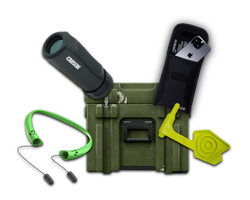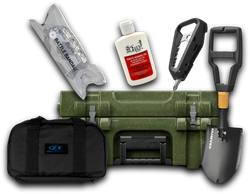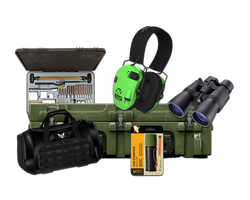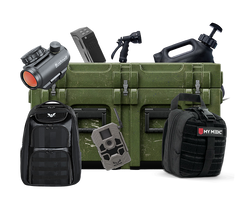How to Carry a Sleeping Bag: Essential Tips for Hikers and Campers
Table of Contents
- Introduction
- The Importance of Proper Packing
- Selecting the Right Sleeping Bag
- Packing Techniques for Your Sleeping Bag
- Additional Tips for Carrying Your Sleeping Bag
- Conclusion
- FAQ Section
Introduction
Imagine this: you’ve planned a weekend camping trip, the kind that promises fresh air, starry nights, and the comforting embrace of nature. However, as you prepare, a nagging question lingers in your mind—how do you carry your sleeping bag effectively? It may seem trivial, but this choice can significantly impact your comfort and convenience on the trail.
Understanding how to carry a sleeping bag is crucial for any outdoor enthusiast, whether you’re a seasoned hiker or a casual camper. A well-packed sleeping bag can enhance your hiking experience by maintaining balance and accessibility, making your journey more enjoyable.
Historically, hikers have experimented with various methods for transporting sleeping bags. From traditional stuff sacks to modern compression bags, the evolution of gear has paved the way for more efficient and practical solutions. Today, as we embrace lightweight and space-saving techniques, the question remains: what’s the best way to carry a sleeping bag during your adventures?
In this blog post, we will guide you through the essentials of carrying a sleeping bag, discussing optimal packing techniques, gear choices, and practical tips for every type of adventure. By the end, you will be equipped with the knowledge necessary to make informed decisions about how to carry your sleeping bag on your next hiking trip.
The Importance of Proper Packing
When it comes to outdoor adventures, proper packing is crucial for several reasons:
-
Comfort: A well-packed sleeping bag can enhance your comfort level by keeping the weight close to your center of gravity and maintaining balance as you hike.
-
Accessibility: Knowing where your sleeping bag is stored allows for quick access when you arrive at your campsite, making it easier to set up quickly and settle in for the night.
-
Protection: Keeping your sleeping bag inside your backpack protects it from the elements, such as rain or mud, ensuring it remains dry and clean for a good night’s sleep.
-
Space Optimization: Efficient packing helps maximize space in your backpack, leaving room for other essential gear.
Understanding these aspects will help you recognize the importance of carrying your sleeping bag correctly.
Selecting the Right Sleeping Bag
Before we delve into how to carry a sleeping bag, it's essential to choose the right one for your needs. Here are key factors to consider:
1. Type of Sleeping Bag
There are two primary types of sleeping bags: down and synthetic.
-
Down Sleeping Bags: These are lightweight, compressible, and offer excellent insulation, making them ideal for cold-weather camping. However, they can lose their insulating properties when wet.
-
Synthetic Sleeping Bags: These are generally heavier but maintain their insulating properties even when damp. They are typically more affordable and easier to care for.
2. Size and Shape
Sleeping bags come in various sizes and shapes, including mummy, rectangular, and semi-rectangular. Mummy bags are designed for warmth and compactness, while rectangular bags provide more room to move but may take up more space in your pack.
3. Temperature Rating
Consider the temperature rating of your sleeping bag to ensure it matches the conditions you’ll be camping in. A bag rated for colder temperatures will be bulkier and heavier, while a lighter bag may not provide enough warmth in chilly conditions.
4. Compression Capability
Look for a sleeping bag that can compress down to a manageable size. Compression sacks can help reduce the bulk of your sleeping bag, making it easier to fit inside your backpack or attach to the outside.
Packing Techniques for Your Sleeping Bag
Once you've selected the right sleeping bag, it’s time to focus on how to carry it effectively. Here are several packing techniques to consider:
1. Utilize a Compression Sack
Using a compression sack is one of the best ways to carry a sleeping bag. This type of sack allows you to compress your sleeping bag to a fraction of its original size. Here’s how to use it effectively:
-
Packing: Stuff your sleeping bag into the compression sack, ensuring it's rolled tightly but not too forcefully to avoid damaging the fill material.
-
Compression: Once the bag is inside, use the straps on the compression sack to tighten it down, reducing the bulk.
-
Storage: Place the compressed sack at the bottom of your backpack. This keeps the weight low and helps with balance.
2. Stuffing vs. Rolling
-
Stuffing: Many hikers prefer to stuff their sleeping bags into their packs rather than roll them. This method is quicker and allows the bag to fill gaps in the backpack, optimizing space.
-
Rolling: If you prefer a more organized approach, you can roll the bag tightly before placing it in the sack. This method can help prevent the bag from becoming lumpy and disorganized.
3. Placement Inside the Backpack
-
Bottom Compartment: If your backpack has a designated sleeping bag compartment, use it. This compartment is typically located at the bottom and is designed to hold the sleeping bag securely.
-
Main Compartment: If there’s no separate compartment, place the sleeping bag in the main compartment, positioning it at the bottom. This keeps the weight centered.
4. Attaching to the Outside
If your sleeping bag is too bulky to fit inside your backpack, you can strap it to the outside. Here’s how:
-
Compression Sack Attachment: Attach the compression sack to the bottom or top of your pack using the external straps. Ensure it's secure to prevent it from shifting or falling off during your hike.
-
Dry Bags: For additional protection against moisture, consider using a waterproof dry bag. This can provide an extra layer of protection in case of rain.
5. Balancing Your Load
Regardless of how you pack your sleeping bag, maintaining balance is critical for comfort while hiking. Here are some tips:
-
Weight Distribution: Keep heavier items, such as food and cooking gear, closer to your back and above the sleeping bag for better balance.
-
Accessibility: If you need quick access to your sleeping bag, consider placing it in side pockets or at the top of the main compartment.
Additional Tips for Carrying Your Sleeping Bag
Here are some extra tips to enhance your experience when carrying a sleeping bag:
-
Practice Packing: Before hitting the trail, practice packing your sleeping bag in different ways to find what works best for you.
-
Use Waterproof Gear: Always consider weather conditions. If rain is expected, ensure your sleeping bag is stored in a waterproof compression sack or dry bag.
-
Consider a Sleeping Bag Liner: A sleeping bag liner can add warmth and keep your bag clean. They can also be lighter and less bulky than a full sleeping bag.
-
Stay Organized: Keep your sleeping bag and other gear organized within your backpack. This makes it easier to find what you need when you arrive at your campsite.
-
Weight Limitations: Be mindful of the weight of your backpack. The heavier the pack, the more challenging it will be to maintain balance and comfort.
Conclusion
Carrying a sleeping bag doesn’t have to be a cumbersome task. By selecting the right sleeping bag, utilizing proper packing techniques, and maintaining balance in your backpack, you can enhance your hiking experience. Remember, the goal is to stay comfortable, organized, and prepared for whatever nature throws your way.
As you gear up for your next adventure, consider exploring Crate Club’s subscription services to discover high-quality tactical gear, including sleeping bags optimized for outdoor performance. With their curated offerings, you can ensure you have the best gear at your disposal.
For more information about Crate Club’s subscription options, visit Crate Club Subscription Services or shop for additional gear at the Crate Club Shop. Embrace the outdoors with the confidence that you’re well-prepared for your journey.
FAQ Section
Q: What is the best way to pack a sleeping bag?
A: The best way to pack a sleeping bag is to use a compression sack to reduce its size and place it at the bottom of your backpack for better balance.
Q: Can I attach my sleeping bag to the outside of my backpack?
A: Yes, if your sleeping bag is too bulky to fit inside, you can securely attach it to the outside using compression straps or bungee cords.
Q: Should I roll or stuff my sleeping bag?
A: Both methods are effective. Stuffing is quicker and allows for better packing efficiency, while rolling can keep the bag organized and prevent lumps.
Q: How can I protect my sleeping bag from moisture?
A: Use a waterproof compression sack or dry bag to protect your sleeping bag from rain or moisture from the ground.
Q: Is it better to carry my sleeping bag and tent inside my backpack?
A: Yes, carrying both items inside your backpack is generally better for balance, protection from the elements, and ease of access.
Share this article



